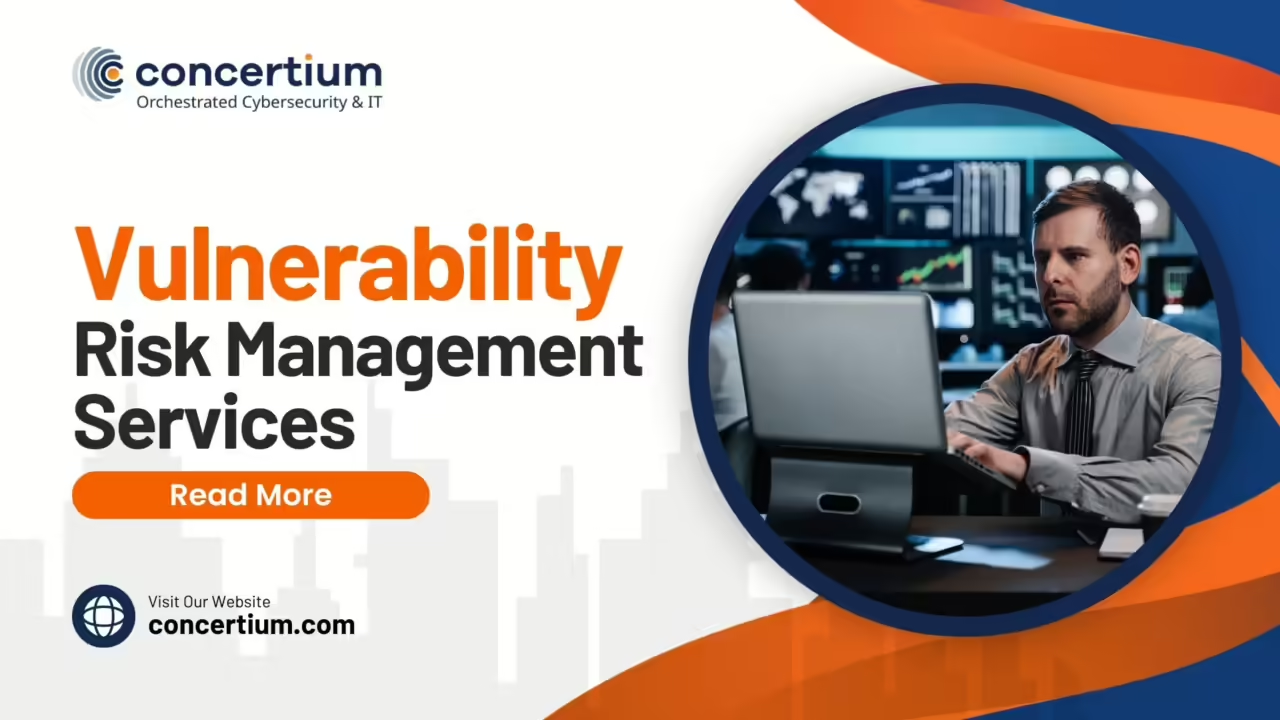How Vulnerability Risk Management Services Protect Business
Businesses are increasingly vulnerable to cyber threats. Vulnerability risk management is a critical process that helps organizations identify, assess, and mitigate security weaknesses before they can be exploited by attackers. Understanding and implementing effective vulnerability risk management can protect your business from significant financial and reputational damage.
What is Vulnerability Risk Management?
Vulnerability risk management is the systematic process of identifying, evaluating, and addressing vulnerabilities within an organization’s IT infrastructure. It involves understanding potential weaknesses (vulnerabilities), assessing the level of risk they pose, and taking steps to mitigate these risks. This proactive approach helps in minimizing the attack surface and enhancing the overall security posture.
Key Terms and Concepts
- Vulnerability: A weakness in a system that can be exploited to compromise security.
- Risk: The potential for loss or damage when a threat exploits security vulnerability.
- Vulnerability Management: The ongoing practice of identifying, classifying, remediating, and mitigating vulnerabilities.
- Risk-Based Vulnerability Management: An approach that prioritizes vulnerabilities based on the risk they pose to the organization.
- Vulnerability Risk: The potential adverse impact of a vulnerability being exploited.
The Vulnerability Management Process
The vulnerability management is the process involves several key stages: identification, evaluation, prioritization, remediation, and verification. Each stage plays a crucial role in ensuring vulnerabilities are effectively managed.
Identifying Vulnerabilities
There are multiple ways to identify vulnerabilities, some of them are following.
- Use of Vulnerability Scanners: Automated tools that scan systems for known vulnerabilities.
- Vulnerability Assessment Tools: Tools that evaluate the security posture of systems and identify potential weaknesses.
Evaluating Risks
- Assessing Vulnerability Severity: Determining the potential impact and likelihood of exploitation using frameworks like the Common Vulnerability Scoring System (CVSS).
- Risk Assessment Methodologies: Techniques to evaluate the potential risk associated with each vulnerability.
Prioritizing Vulnerabilities
- Prioritization Based on Risk: Focusing on vulnerabilities that pose the greatest risk to the organization.
- Use of CVSS: Employing the Common Vulnerability Scoring System to rank vulnerabilities based on their severity and exploitability.
Remediation
- Steps in the Remediation Process: Identifying solutions, implementing fixes, and ensuring vulnerabilities are adequately addressed.
- Importance of Timely Remediation: Prompt action to prevent exploitation and minimize risk exposure.
Verification and Reporting
- Conducting Another Vulnerability Scan: Ensuring that vulnerabilities have been effectively remediated.
- Reporting and Documentation: Keeping detailed records of vulnerabilities and the actions taken to address them.
Traditional vs. Cyber Risk Based Vulnerability Management
Traditional Vulnerability Management
- Overview and Limitations: Traditional methods focus on identifying and fixing all vulnerabilities, often leading to resource constraints and inefficiencies.
- Legacy Vulnerability Management Tools: Older tools and approaches that may not prioritize vulnerabilities based on risk.
Risk-Based Vulnerability Management
- Definition and Advantages: Focuses on prioritizing vulnerabilities intelligence that pose the greatest risk to the organization. This approach ensures that resources are allocated efficiently, and critical vulnerabilities are addressed promptly.
- Risk-Based Approach to Vulnerability Management: Integrates risk assessment into the vulnerability management process, providing a more strategic and effective way to handle vulnerabilities.
- How It Differs from Traditional Approaches: Emphasizes risk prioritization and uses advanced tools and threat intelligence to guide remediation efforts.
Risk-Based Vulnerability Management Programs
Establishing a Program
- Steps to Create a Risk-Based Vulnerability Management Program: Define objectives, assess current capabilities, select appropriate tools, and develop a comprehensive plan.
- Key Components of a Successful Program: Integration with existing risk management processes, continuous monitoring, and regular updates.
Best Practices
- Incorporating Threat Intelligence: Using real-time data on emerging threats to inform vulnerability management efforts.
- Using Risk Scores to Prioritize Vulnerabilities: Leveraging scoring systems to identify and address high-risk vulnerabilities first.
- Regular Vulnerability Scans and Assessments: Continuously monitoring systems to detect new vulnerabilities.
- Integration with Existing Risk Management Processes: Ensuring vulnerability management aligns with broader organizational risk management strategies.
Benefits of Risk-Based Vulnerability Management
Enhanced Security Posture
- Improved Identification and Remediation of Vulnerabilities: More effective detection and resolution of security weaknesses.
- Reduced Exposure to Cyber Risks: Lower likelihood of successful attacks due to proactive risk management.
Resource Optimization
- Efficient Allocation of Security Resources: Focusing efforts on the most critical vulnerabilities.
- Focus on Vulnerabilities Posing the Greatest Risk: Ensuring high-risk vulnerabilities are addressed promptly.
Compliance and Reporting
- Meeting Regulatory Requirements: Ensuring compliance with industry standards and regulations.
- Detailed and Accurate Reporting for Stakeholders: Providing comprehensive reports on vulnerability management activities and outcomes.
Common Challenges and How to Overcome Them
Challenges
- Resource Constraints: Limited budgets and personnel for effective vulnerability management.
- Managing Large Volumes of Vulnerability Data: Handling and prioritizing extensive data from vulnerability scans.
- Integrating with Existing Security Frameworks: Ensuring new vulnerability management processes fit seamlessly with current security practices.
Solutions
- Automation of Vulnerability Management Processes: Using automated tools to streamline vulnerability identification, assessment, and remediation.
- Use of Advanced Vulnerability Management Tools: Leveraging sophisticated tools that provide better risk prioritization and threat intelligence.
- Continuous Improvement and Adaptation: Regularly reviewing and updating vulnerability management strategies to address new threats and improve effectiveness.
Effective vulnerability risk management is essential for protecting your business from cyber threats. By adopting a risk-based approach, organizations can prioritize and address vulnerabilities that pose the greatest risk, optimize their security resources, and enhance their overall security posture.
Implementing a comprehensive risk-based vulnerability management program can significantly reduce your organization’s exposure to cyber risks. Start today to ensure your business is protected against the ever-evolving threat landscape.
Key Steps in Conducting a Vulnerability Risk Assessment
Preparation and Planning
- Define the Goals of the Assessment: The first step in preparing for a vulnerability risk assessment is to clearly define the objectives. Goals might include identifying critical vulnerabilities, understanding risk levels, improving the overall security posture, or meeting compliance requirements. These objectives should be specific, measurable, achievable, relevant, and time-bound (SMART).
- Determine the Scope: Establish the boundaries of the assessment. This includes deciding which systems, applications, networks, and data will be evaluated. The scope could be limited to critical infrastructure or encompass the entire organization. Clearly defining the scope helps focus the assessment efforts and ensures comprehensive coverage of all relevant assets.
- Identify Key Stakeholders and Their Roles: Engage relevant personnel from various departments, including IT, security, compliance, and risk management. Identify the stakeholders who will be involved in the assessment and define their roles and responsibilities. This ensures coordinated efforts and effective communication throughout the process.
Gathering Necessary Resources and Tools
- Select Appropriate Vulnerability Assessment Tools and Scanners: Choose tools that match the organization’s needs and are capable of detecting a wide range of vulnerabilities. Consider factors such as ease of use, coverage, accuracy, and integration capabilities. Examples of popular tools include Nessus, Qualys, and OpenVAS.
- Assemble a Skilled Team with Expertise in Cybersecurity and Risk Management: Form a team of professionals with the necessary technical skills and experience to conduct thorough assessments and interpret the results. This team should include cybersecurity experts, risk analysts, and IT personnel who understand the organization’s infrastructure.
Conducting the Assessment
Identifying Assets and Vulnerabilities
- Inventory All Assets Within the Scope: Create a comprehensive list of hardware, software, data, and other resources that fall within the defined scope. This inventory helps in understanding the attack surface and the potential impact of vulnerabilities on critical assets.
- Perform Vulnerability Scans to Detect Potential Security Weaknesses: Use automated vulnerability scanners to identify known vulnerabilities in the assets. These tools scan systems and applications against a database of known security issues, helping to detect weaknesses that could be exploited by attackers.
Evaluating the Impact and Likelihood of Vulnerabilities
- Assess the Severity of Identified Vulnerabilities: Evaluate the potential impact of each vulnerability on the organization’s operations, data integrity, and reputation. Use frameworks like the Common Vulnerability Scoring System (CVSS) to quantify the severity.
- Determine the Likelihood of Exploitation Based on Threat Intelligence: Assess the probability that each vulnerability will be exploited by considering factors such as the presence of active threats, the ease of exploitation, and the organization’s existing security controls. Threat intelligence provides valuable context for this evaluation.
Analyzing and Prioritizing
- Combine Severity and Likelihood Assessments to Determine Risk Levels: Calculate a risk score for each vulnerability by combining the severity of its potential impact with the likelihood of its exploitation. This provides a quantifiable measure of risk that helps prioritize remediation efforts.
- Use a Risk Matrix or Scoring System to Categorize Vulnerabilities: Organize vulnerabilities into categories such as high, medium, and low risk based on their risk scores. A risk matrix can visually represent these categories, aiding in the decision-making process.
Prioritizing Vulnerabilities Based on Risk Scores
- Focus on High-Risk Vulnerabilities that Pose the Greatest Threat: Prioritize remediation efforts on vulnerabilities with the highest risk scores. Addressing these vulnerabilities first helps mitigate the most significant threats to the organization.
- Develop a Remediation Plan Based on Prioritization: Create a detailed plan outlining the steps needed to remediate prioritized vulnerabilities. This plan should include timelines, assigned responsibilities, and the specific actions required to address each vulnerability.
Implementing a Risk-Based Vulnerability Management Strategy
Strategic Planning
- Define Clear, Measurable Objectives for the Vulnerability Management Program: Establish specific goals for the program, such as reducing the number of critical vulnerabilities, improving response times, or achieving compliance with industry standards. These objectives should be aligned with the organization’s overall security strategy.
- Align Goals with the Organization’s Overall Security Strategy: Ensure that the vulnerability management objectives support the broader security and business goals of the organization. This alignment helps secure executive support and ensures that vulnerability management efforts contribute to the organization’s success.
Developing a Comprehensive Strategy
- Create a Detailed Plan Outlining Processes, Tools, and Responsibilities: Document the steps involved in the vulnerability management process, the tools to be used, and the roles and responsibilities of team members. This plan should provide a clear roadmap for implementing and maintaining the program.
- Ensure the Strategy Includes Continuous Monitoring and Improvement: Incorporate mechanisms for regular reviews and updates to keep the program effective and responsive to new threats. Continuous monitoring helps identify emerging vulnerabilities and ensures that the program remains aligned with the organization’s needs.
Execution and Monitoring
- Execute the Vulnerability Management Processes as Planned: Follow the documented processes to conduct assessments, prioritize vulnerabilities, and implement remediation actions. Ensure that all team members understand their roles and responsibilities and have the necessary resources to perform their tasks effectively.
- Deploy Necessary Tools and Technologies: Ensure all selected tools are properly configured and integrated into the organization’s security infrastructure. This includes setting up automated vulnerability scanners, management platforms, and other technologies that support the vulnerability management process.
Continuous Monitoring and Adjustments
- Regularly Monitor Systems for New Vulnerabilities: Conduct ongoing scans and assessments to detect new vulnerabilities as they emerge. Regular monitoring helps maintain a current understanding of the organization’s security posture and identify potential threats promptly.
- Adjust the Strategy Based on Emerging Threats and Changing Business Needs: Stay adaptable to new threats and evolving business requirements by updating the vulnerability management strategy as needed. This includes incorporating new tools, techniques, and best practices to address emerging challenges.
Review and Improvement
Regular Reviews of the Strategy
- Conduct Periodic Assessments to Evaluate the Effectiveness of the Program: Regularly review the vulnerability management program to identify strengths, weaknesses, and areas for improvement. These assessments help ensure that the program remains effective and aligned with organizational goals.
- Identify Areas for Improvement and Update the Strategy Accordingly: Use the findings from reviews to make necessary adjustments and enhancements to the program. This continuous improvement process helps keep the program relevant and effective in addressing new threats.
Incorporating Feedback and Improvements
- Gather Feedback from Stakeholders and the Security Team: Solicit input from team members and other stakeholders to understand their experiences and suggestions for improvement. This feedback provides valuable insights into the program’s effectiveness and areas for enhancement.
- Implement Changes to Enhance the Program’s Effectiveness: Use the feedback to make targeted improvements that enhance the overall effectiveness of the vulnerability management program. This includes updating processes, tools, and training programs as needed.
Tools and Solutions for Effective Vulnerability Management
Vulnerability Scanners
- Explain the Role of Vulnerability Scanners in Identifying Security Weaknesses: Describe how these tools help in identifying security weaknesses by scanning systems and applications for known vulnerabilities. Vulnerability scanners provide automated and systematic assessments that detect potential threats and weaknesses.
- Provide Examples of Popular Vulnerability Scanners: Highlight tools such as Nessus, Qualys, and OpenVAS, explaining their features and capabilities. These tools offer comprehensive scanning capabilities, detailed reports, and integration with other security solutions.
How to Choose the Right Scanner
- Criteria for Selecting a Scanner: Discuss factors such as ease of use, coverage, accuracy, integration capabilities, and cost. These criteria help organizations choose a scanner that meets their specific needs and budget.
- Consideration of Specific Organizational Needs and Resources: Tailor the selection process to the unique requirements and constraints of the organization. This includes considering the size and complexity of the IT environment, regulatory requirements, and available resources.
Features of Advanced Vulnerability Management Tools
- Integration with Other Security Tools: Explain how advanced tools can integrate with security information and event management (SIEM) systems, threat intelligence platforms, and other security solutions. Integration enhances the overall security posture by providing a unified view of threats and vulnerabilities.
- Automation Capabilities for Vulnerability Detection and Remediation: Highlight features that automate vulnerability detection, assessment, and remediation processes. Automation reduces manual effort, increases efficiency, and helps ensure timely and accurate remediation.
Integrating with Other Security Tools
- Ensuring Seamless Integration to Enhance Overall Security Operations: Discuss the importance of integrating vulnerability management tools with other security tools to create a cohesive security ecosystem. Seamless integration helps streamline operations and improve threat detection and response.
- Benefits of a Unified Security Management Approach: Explain how integrated tools provide a more comprehensive view of the organization’s security posture and streamline management processes. A unified approach enhances the ability to detect, assess, and respond to threats effectively.
Benefits of Automation in Vulnerability Management
- Increased Efficiency and Accuracy in Identifying and Remediating Vulnerabilities: Describe how automation reduces manual effort and improves the accuracy of vulnerability detection and remediation. Automated tools can quickly scan large environments, identify vulnerabilities, and apply fixes.
- Reduction in Manual Workload and Potential Human Errors: Highlight the benefits of automation in minimizing human errors and allowing security teams to focus on higher-level tasks. Automation reduces the risk of oversight and ensures consistent and thorough vulnerability management.
Examples of Automated Tools and Platforms
- Overview of Leading Automated Vulnerability Management Solutions: There are multiple tools have automation features and benefits. These platforms offer comprehensive solutions for automated vulnerability management, from detection to remediation.
- How These Tools Streamline Vulnerability Management Processes: Provide examples of how automation tools enhance the efficiency and effectiveness of vulnerability management activities. These tools simplify complex processes, reduce the time needed for assessments, and improve overall security.
The Role of the Security Team in Vulnerability Management
Key Responsibilities of the Security Team
- Conducting Vulnerability Assessments and Scans: The security team is responsible for regularly scanning systems and applications for vulnerabilities. This involves using automated tools and manual techniques to identify potential weaknesses.
- Analyzing Vulnerability Data and Prioritizing Remediation Efforts: Interpreting scan results and determining which vulnerabilities to address first based on risk assessments. The security team prioritizes remediation efforts to mitigate the most significant threats.
Coordinating with Other Departments
- Collaborating with IT, Compliance, and Risk Management Teams: Work closely with other departments to ensure a holistic approach to vulnerability management. Effective collaboration helps in aligning vulnerability management efforts with broader organizational goals.
- Ensuring Organization-Wide Awareness and Participation: Promote a culture of security awareness across the organization and involve various stakeholders in the vulnerability management process. This includes conducting training sessions and communicating the importance of security practices.
Essential Skills for Effective Vulnerability Management
- Technical Expertise in Cybersecurity Tools and Methodologies: Security team members need to be proficient in using vulnerability management tools and understanding cybersecurity principles. This includes knowledge of scanning tools, risk assessment frameworks, and remediation techniques.
- Analytical Skills for Risk Assessment and Prioritization: The ability to assess and prioritize risks based on vulnerability data is crucial for effective vulnerability management. Analytical skills help in interpreting scan results, evaluating risk levels, and making informed decisions.
Training and Development Programs
- Importance of Continuous Learning and Professional Development: Encourage ongoing education to keep security team members updated on the latest threats, tools, and techniques. Continuous learning ensures that the team remains capable of addressing evolving security challenges.
- Recommended Training Programs and Certifications: Highlight certifications such as Certified Information Systems Security Professional (CISSP), Certified Ethical Hacker (CEH), and specialized vulnerability management training. These certifications provide the necessary knowledge and skills to excel in vulnerability management.





